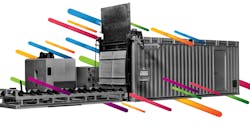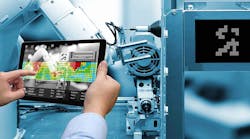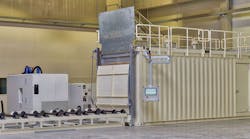Many machine manufacturers -- and their customers -- are still contemplating how to position their business within the technological shift known as the Industrial Internet of Things (IIoT), and how to gain the advantages promised there. However, manufacturers that have already made the jump are seeing tremendous business outcomes. That’s especially the case for manufacturing companies that use the IIoT in creative ways.
In this context, “creative” means “creating new revenue models.” Through servitization, equipment-as-a-service, subscription models, and pay-per-use programs, the IIoT lets machine manufacturers expand their technology-focused business opportunities through service. It’s also helping to address significant pain points for their customers, machine buyers and operators.
You may be wondering, “OK, but how does the IIoT fit into the ‘services’ equation?” It’s a fair question, as the IIoT is primarily seen as a way to harvest more data from machinery. That’s true, but many companies stumble when it comes to turning that data into money.
Servitization models can transform data into real business outcomes. The connection between IIoT technologies and subscription models isn’t entirely obvious, but this is the basic crumb trail:
1. IIoT-enabled machines let operators capture granular data in real time;
2. That data can be analyzed by systems that identify patterns and predict problems;
3. Those analytics provide critical insights to increase uptime and decrease service costs;
4. That bundle of equipment and services can be offered for a per-use or recurring fee.
The end result benefits machine manufacturers and customers alike. Manufacturers no longer need to rely solely on equipment sales to boost their bottom line. Instead, by using real-time data and insights to provide efficient maintenance, service, and consultation, the same companies can unlock new revenue streams.
Those subscription models are incredibly attractive to customers for a number of reasons, as they solve several challenges they’ve faced in the past. First, and foremost, the price of buying industrial machinery outright is daunting -- and it only represents a fraction of the total cost of ownership over the lifespan of a machine. Maintenance fees and services through a third-party provider are expensive, and unplanned downtime can cost tens of thousands of dollars per hour.
A servitization model addresses all of these issues at once. It decreases the ongoing cost for using a machine. It bundles service costs into a monthly fee. Often, it will guarantees constant machine uptime. And, by “renting” equipment rather than buying it customers can shift capital expenditure (CapEx) costs to operational expenditure (OpEx) costs. That shift can lead to huge benefits in terms of taxes, support infrastructure, and the machine’s lifecycle.
These are not just theoretical scenarios. According to McKinsey, aftermarket service value and annual services revenue are two critical drivers for success in the industrial sector. Predictive analytics, bundled services, and guaranteed business outcomes are three ways to achieve those goals, and they’re all powered by IIoT technology.
Here’s a real-world example that goes beyond the average “equipment-as-a-service” model. Aluvation is a company that provides aluminum heat-treatment services to automotive OEMs and their suppliers. Traditionally, aluminum heat-treatment requires such manufacturers to assume significant transportation costs and logistics for car parts to be treated off-site. Otherwise, considerable investments in capital equipment and technology are required on-site, along with ongoing maintenance and operating expenses.
Instead, Aluvation delivers IoT-equipped aluminum-processing “microfactories” to OEMs — as if they were pizzas. These modular, mobile facilities are about the size of shipping containers, and they can be brought in and brought out quickly. Aluvation offers heat-treatment services on demand, which has done wonders for the company and its customers. It’s cost-effective and convenient for OEMs, and it has increased Aluvation’s revenues through pay-per-use pricing.
Because Aluvation’s mobile treatment facilities are equipped with sensors and advanced IIoT platforms, they’re also able to provide extras. Using predictive maintenance analytics, they’ve been able to increase system uptime by 16%. The sensors and systems in their innovative microfactories also ensure precise pay-per-usage billing.
Aluvation’s unique approach shows the power of creativity and imagination when it comes to unleashing the power of IIoT. Harvesting data is just square one, and even analyzing that data with state-of-the-art technology is rudimentary. The real business outcomes happen when you put those insights into motion in surprising ways -- ideally, ways that introduce new benefits for your company and its customers alike.
Ultimately, that creative process begins with a simple set of questions: What are the major pain points in your industry, what are the advantages you can bring, and how can modern technology act as an enabler or a catalyst for those efforts? Once you decide the answer to that question, the right IoT implementation partner can help you make it a reality.
Guneet Bedi is the General Manager, Americas, for relayr, which supplies enterprise middleware and IoT solutions for industrial organizations. Contact him at [email protected], or follow him at twitter.com/guneetIoT








